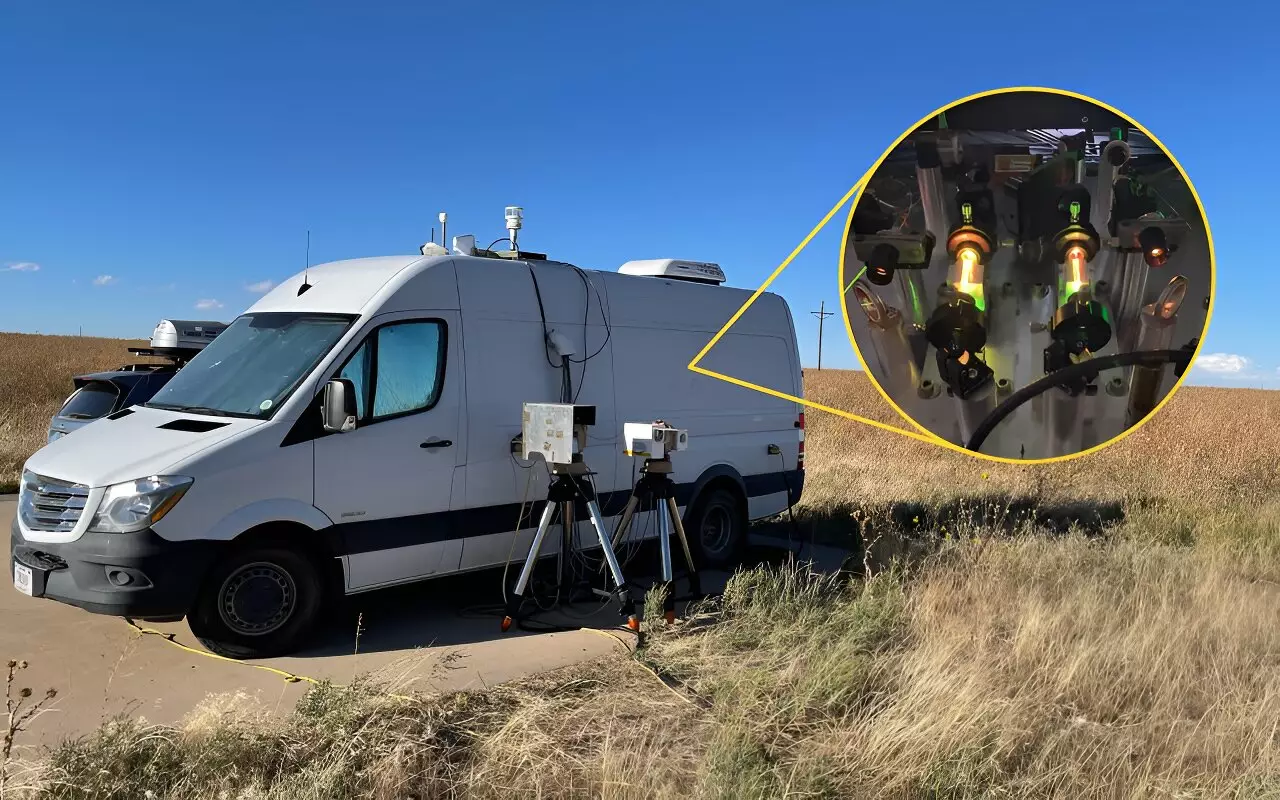Climate change has become an urgent global concern, and reducing greenhouse gas emissions is crucial in mitigating its impact. Methane, a highly potent greenhouse gas, is a major contributor to global warming. To effectively manage and reduce methane emissions, accurate and precise monitoring is essential. Researchers at the National Institute of Standards and Technology (NIST) have recently made significant advancements in emissions-monitoring technology to measure methane emissions and identify their sources, even in harsh field conditions. This upgraded technology has the potential to provide valuable insights for policymakers and industry leaders to make informed decisions in the fight against climate change.
In a study published in the journal Geophysical Research Letters, the NIST research team utilized their upgraded emissions-monitoring technology to estimate methane emissions in a large area of Northern Colorado. The study focused on two primary sources of methane emissions: agriculture and oil and gas production. The findings of the study revealed two unexpected results.
Greater Methane Emissions from Concentrated Animal Feeding Operations (CAFOs)
One significant finding in the study was that methane emissions from concentrated animal feeding operations (CAFOs) were even higher than predicted. Traditional methods of estimating emissions from CAFOs relied on economic activity, such as multiplying the number of animals by an average estimate of methane emission per animal. However, the NIST method involved directly measuring the variation of methane and other gases in the atmosphere. This approach provided more accurate data on the actual emissions from CAFOs, highlighting the need for targeted strategies to mitigate these emissions.
Plateaued Emissions from Oil and Gas Production
Another surprising discovery was that total emissions from oil and gas production in the study area seemed to plateau over the last few years, despite the increase in production. This observation is significant, as it challenges the assumption that emissions scale linearly with production. This finding indicates the importance of continuous monitoring and analysis to understand the complex dynamics of emissions in the oil and gas sector. By identifying the factors contributing to these plateaued emissions, policymakers can develop strategies to further reduce methane emissions from this industry.
The upgraded emissions-monitoring technology developed by NIST overcomes several technical challenges associated with accurate methane monitoring. Traditional methods focused on economic activity, while the NIST method directly measures the gases in the atmosphere. The NIST setup utilizes frequency combs, which are special lasers with a broad spectrum of colors, to measure gas concentrations along a specific path.
Enhanced Robustness and Portability
The latest version of the frequency comb spectrometer boasts improved robustness, portability, and adaptability to diverse climates. Previous versions had limitations, including high downtime and sensitivity to extreme weather conditions. The new system has been engineered to be more temperature stable and has a more efficient data collection process, allowing for accurate measurements even in harsh conditions. This resilience is vital for capturing emissions data in real-world scenarios and enables researchers to monitor emissions consistently over extended periods.
Comprehensive Understanding through Multiple Gas Analysis
The upgraded technology not only measures methane emissions but also tracks other gases, including ethane and ammonia. Simultaneously analyzing correlations between multiple gases helps distinguish the contributions from different sectors such as oil and gas and agriculture. This comprehensive understanding of emissions sources enables policymakers to develop targeted strategies to mitigate the impact of these pollutants effectively.
The advancements in emissions monitoring technology offer a promising path forward in the global effort to reduce methane emissions. The NIST research team envisions further improvements in sensitivity and precision, as well as expanding the research area. They plan to conduct studies in various regions, including near Salt Lake City, to obtain regional variations and enhance the applicability of their findings.
Providing Accurate and Actionable Information
Accurate and actionable information is crucial for scientists, industry leaders, and policymakers to make informed decisions in reducing greenhouse gas emissions. The upgraded emissions-monitoring technology developed by NIST provides a reliable tool to measure methane emissions, identify their sources, and track their changes over time. By providing detailed data on emissions, this technology enables policymakers to adjust regulations accordingly and industry leaders to implement targeted emission reduction strategies.
A Crucial Role in Combating Climate Change
As the global community intensifies its focus on reducing methane emissions, advancements in emissions-monitoring technology, such as the one developed by NIST, play a crucial role in the fight against climate change. With the ability to accurately measure emissions and identify their sources, this technology empowers stakeholders to accelerate their efforts in reducing methane emissions and mitigating the risks of climate change.
The upgraded emissions-monitoring technology developed by NIST has significant implications for the reduction of methane emissions. By directly measuring the gases in the atmosphere, this technology provides accurate data on emissions from various sources. The findings from the Northern Colorado study shed light on the surprising magnitude of methane emissions from CAFOs and the plateauing emissions from oil and gas production. With continuous advancements in technology and expanded research areas, emissions monitoring can facilitate informed decision-making and drive effective strategies in the global fight against climate change.


Leave a Reply